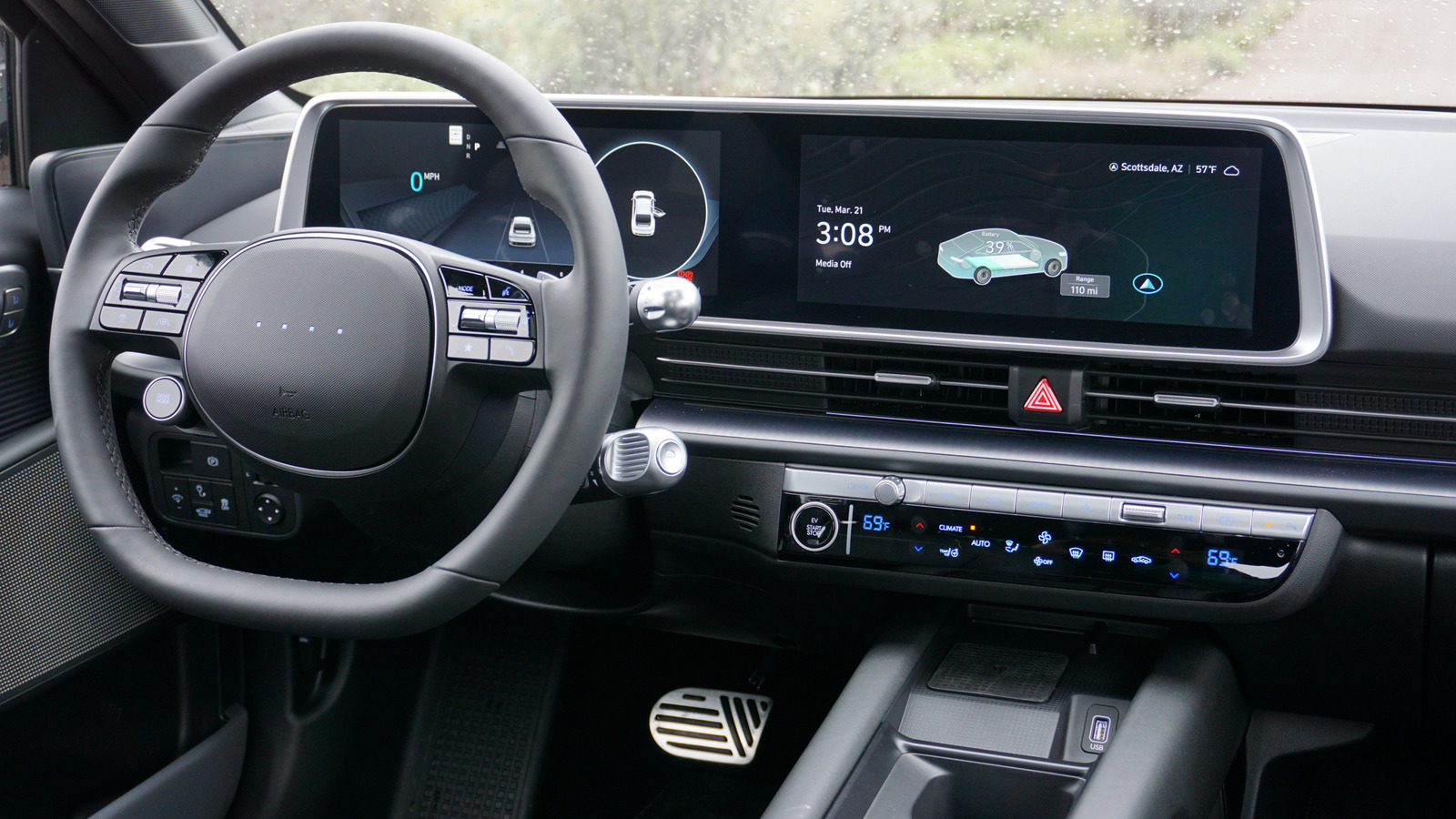Hyundai is in the final stages of prepping its next generation of interiors, set to debut sometime in 2026, and the Korean automaker promises that physical buttons will still be abundant. I’m sure this is great news for people on the internet who don’t buy new cars and love to complain.
Adding to the excitement for Luddites, Hyundai is also expected to create smaller infotainment screens with easier-to-use software. The company’s vice president, Simon Loasby, confirmed the news to Autocar at the Seoul Motor Show. It’s a similar move to what Volkswagen has done in some of its cars like the updated Golf GTI.
“So our philosophy is to keep the eyes on the road and keep your hands on the wheel, and then you could very quickly look at what are your frequent-use interactions. There aren’t many… but you want them to stay as physical buttons because those are things I want to adjust without looking away.”
He added: “It is all about the philosophy of calmness. The technology is there, but it is not shouting at us, but the architecture is keeping the driving experience safe.
“So we will have a balance of physical buttons but the display [will be there too] because it gives you the extra layers you can go in to.”
Loasby tells Autocar that the move is being made in the name of safety: creating a better way to keep the driver’s eyes on the road as much as possible. He says designers and engineers at Hyundai realized that a central infotainment screen is actually “just a distraction.” Ideally, you don’t want people looking at screens for a long period of time. You want them looking down the road.
A more driver-focused interior
Hyundai’s design boss, Luc Donckerwolke (great name, great car designer), says that figuring out what the ideal screen size is, and making it usable, will be a big part of the automaker’s next generation of interiors. He described a “balance” between having a screen with all of the relevant information you could want in a size that doesn’t take away from driving concentration. Here’s what else he told Autocar:
“At the same time, we have to make sure the screens are not forcing you to go into a sub-menus for operations that only required buttons before. So it’s always not overkilling it. If you rely only on screens, you are tending to go away from… hands on the steering wheel and the eyes on the road, which is, for me, the most important factor of security safety.”
He added that while “we all have a love for analogue interaction”, screens “are ideal because you save a lot of tooling by only having the screen”.
Donckerwolke predicted that the automotive industry — as a whole — will see a real return to analog interactions and a reduction of screens in the “next one or two generations.” This should all be music to your ears if you see screens as a great scourge on society.
He also spoke about what we can expect to see out of the interiors of upcoming Hyundai N-badged vehicles. We can apparently expect to see even more stuff on the steering wheel “because when I’ve got gloves on, I can’t use a touchscreen.” That’s some real driver-focused thinking if I’ve ever seen it, so here’s hoping it arrives in time for the recently-confirmed Ioniq 6 N.
Listen, you all know my feelings on modern car interiors. I’ve said in the past that complaints from the enthusiast community about big screens and a lack of buttons are generally overblown, but I supposed Hyundai sees a niche in the market for a less tech-laden interior. There’s nothing wrong with more options for the general car-buying public.




